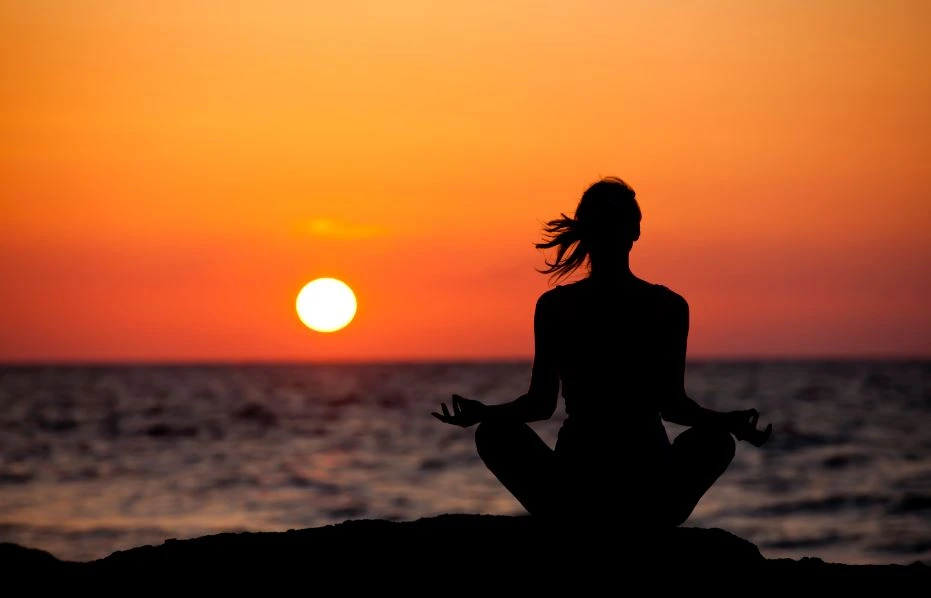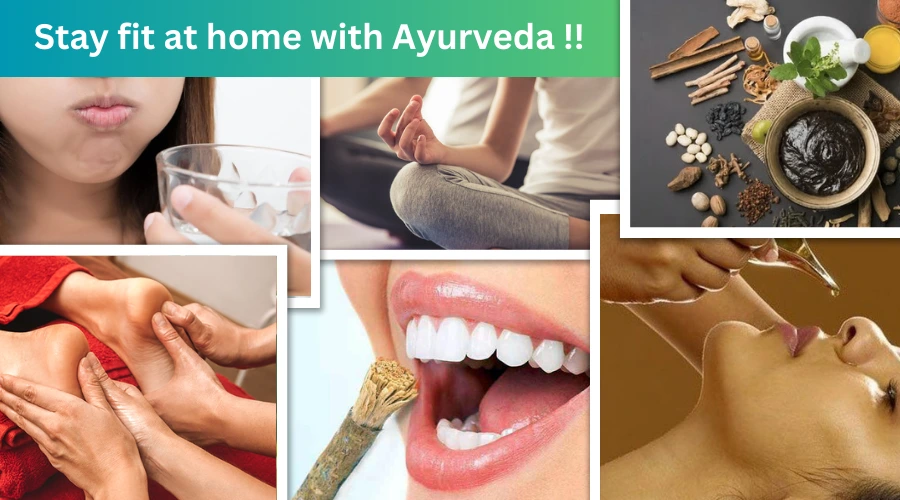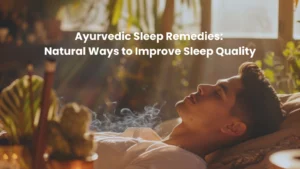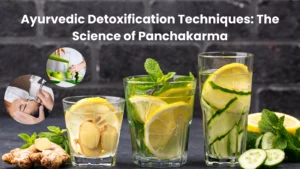Ayurveda is an ancient science of life. In the Ayurvedic science of life, health (Aarogya) is considered the most vital aspect for the accomplishment of Purusharth Chatushya (Four aims and objectives of life).
In the present era of wealth and technology people are living their life only to earn money in pursuit of prosperity to live a responsible family life but they have left their physical activity, dietary schedule, sleep pattern, etc. which leads them to suffer from lifestyle diseases. Ayurveda being a holistic health science emphasizes the importance of a healthy lifestyle for the prevention of lifestyle diseases. In earlier days, life was not so hectic. It was quite simple and free of too many challenges with a healthy environment in comparison to these days. People were healthy as they had to perform all the daily routine activities on their own. But now, in the era of wealth and technology, life has become comfortable, but it has also become hectic and unhealthy because of competition. Nowadays, because of unhealthy lifestyles, people become less active at both physical and mental levels which leads to loss of health.
It is better to prevent disease rather than try to cure disease after they occur. So, in order to maintain good health and disease-free life, a vast description of the daily regimen (Dincharya) is mentioned in Ayurveda. Various aspects of dincharya and their applications in the present scenario are described below:
1. Bramhamuhurta Jagrana (Time of getting up in Brahmamuhurta) –
In Ayurveda, it is advisable to wake up during brahmamuhurta (early in the morning i.e., 90 min before sunrise). Brahma means knowledge; this time is also favorable for reading as well as satva guna is also dominant in the human body at this time. Nascent oxygen in the atmosphere at that time easily and readily mixes up with hemoglobin to form oxyhemoglobin which nourishes the remote tissue rapidly. Exposure to bright light in the early morning causes the release of serotonin (neurotransmitter) which contributes to the feeling of well-being and happiness and keeps the person happy and alert. Because of fresh air, lower air pollution, and lower noise pollution, it is advised one should practice Yoga, Pranayama, and Meditation in brahmamuhrta.

2. Ushapan (Intake of water early in the morning) –
Drink a glass of lukewarm water after waking up. A person who drinks water at the time of sunrise daily can live for a period of hundred years, without any disease and fear of old age. He also can prevent following diseases like Arsha (Haemorrhoids), Sotha (oedema), Grahani (sprue), Jwara (fever), old age, skin disorders, and obesity-related diseases. This water should be kept overnight in a copper vessel. Copper has many benefits for good health.
3. Shauchkarma –
After ushapan daily evacuate the body waste (stool and urine) in toilets. Never suppress nor forcefully void the natural urges. Vegvidharna (suppression) can lead to many diseases.
4. Dantdhavan (Cleaning of teeth) –
It is directed to clean the teeth in the morning and after taking meals. It stimulates taste perception and increases salivation. According to Ayurveda teeth should be cleaned by chewing twigs of certain medicinal plants like neem, khadir, etc. which makes gums stronger and is also a good exercise for facial muscles.
5. Jivha nirlekhan (tongue cleaning) –
The tongue should be cleaned daily. This practice of oral health promotes overall physical and mental health by removing the coating and stimulating the tongue, this helps to balance the heavy and dull qualities of Kapha dosha.
6. Anjana (application of collyrium in eyes) –
In today’s time, excessive work on computers results in dry eye or computer vision syndrome. So daily application of Anjana removes Kapha dosha from the eyes and improves eye health. It removes dirt from the eye and subsides the burning sensation, itching, and pain of the eyes.
7. Nasya (oily nasal drops) –
Put two drops of sesame oil/mustard oil/ghee or Anu taila (Ayurvedic preparation) in both nostrils. It strengthens the sense organs, prevents premature greying of hair, and baldness, and ensures good sleep.
8. Gandusha (Mouth wash) –
Filling the mouth with Gandusha Dravya and retaining it for some time is called Gandush. It is rejuvenation and preventive therapy which enhances the senses, brings about a feeling of freshness, and invigorates the mind. This technique can also benefit from bad breath, dry face, dull senses, anorexia, loss of taste, impaired vision, etc.
9. Abhyanga (oil massage) –
Abhyanga, mentioned in dinacharya, is an ancient ayurvedic approach adopted for healing, relaxation, and treating various types of vataj disease. It should be performed daily. Especially oil should be applied to the head, ears, and feet. Abhyanga delays aging. It works on Manas Bhav and hence reduces stress and helps in attaining good and sound sleep.
10. Vyayam (Exercising Yoga) –
The aim of Vyayam is to promote the harmonious development of the whole body. Simple exercises and yoga can be practiced daily at home. Daily vyayam helps in physical development, luster, compactness of body parts, stimulation of digestive power, firmness, lightness, tolerance to fatigue, cold, and heat, and provides immunity. Ardhashakti (half of the strength) vyayam is indicated in sheeta and Vasant kala only, as vyayam practiced beyond the capability of the body can be harmful. Kapha prakruti person has a strong constitution and immunity so they can get involved in a faster-paced regimen that will help them to get the blood pumping and their body moving, like aerobics, Zumba, belly dancing, and water exercises.
The best exercises for pitta types are medium in intensity and will avoid overheating the body and mind. Avoid exercising especially at mid-day when the sun and the pitta are at their strongest point.
Vata dosha is made up of air and space. Vata types tend to be smaller, more fragile, and lower weight by nature. So vata types must remember to keep pace slowly and the intensity low, gentle, and non-weight bearing exercises.
11. Snana (Bath) –
Daily bathing improves agni (digestive power), longevity, and enhances sexual desire, provides health, energy, and strength. It removes kandu (itching), mala, ashram (fatigue), sweda (sweat), lethargy, Trishna (thirst),daha (burning sensation), and ill feeling. Ayurveda suggests that having a very hot water bath is bad for eyes and hair. Always use cold or lukewarm water. Bathing in very cold water in the winter season vitiates Kapha and Vata, likewise bathing in very hot water in the hot season vitiates Pitta and Rakta. Also, it is said in Ayurveda that taking a bath right after eating food is harmful because it leads to indigestion, nausea, and abdominal discomfort. These daily regimen procedures have beneficial effects on the proper functioning of the body thereby maintaining a state of equilibrium of three doshas (vata, pitta, kapha), seven dhatu, three mala, and power of digestion along with pleasant mind, soul, and sense organs, which in turn helps to attain positive health.
Dr. Jyotirmayee Verma




